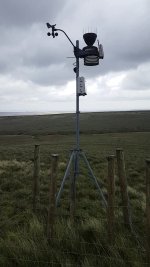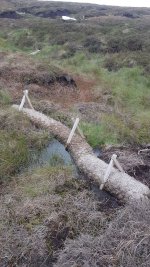The Centre for Ecology & Hydrology also has an incredibly detailed data set going back a variable number of years. Downstream of High Bentham appears to be the most complete local river. Something to watch out for is that cumecs is not proportionally related to river height:
https://nrfa.ceh.ac.uk/data/station/meanflow/72009
"Peak flow data" lists the highest day in each 12 month period (these are summer to summer, rather than calendar years), & does not include other high levels in same period - you have to check page I linked to for those. If you change "annual maximum data" to "peak flow rating information", you get a chart as to how volume varies with height.
https://nrfa.ceh.ac.uk/data/station/meanflow/72009
"Peak flow data" lists the highest day in each 12 month period (these are summer to summer, rather than calendar years), & does not include other high levels in same period - you have to check page I linked to for those. If you change "annual maximum data" to "peak flow rating information", you get a chart as to how volume varies with height.








